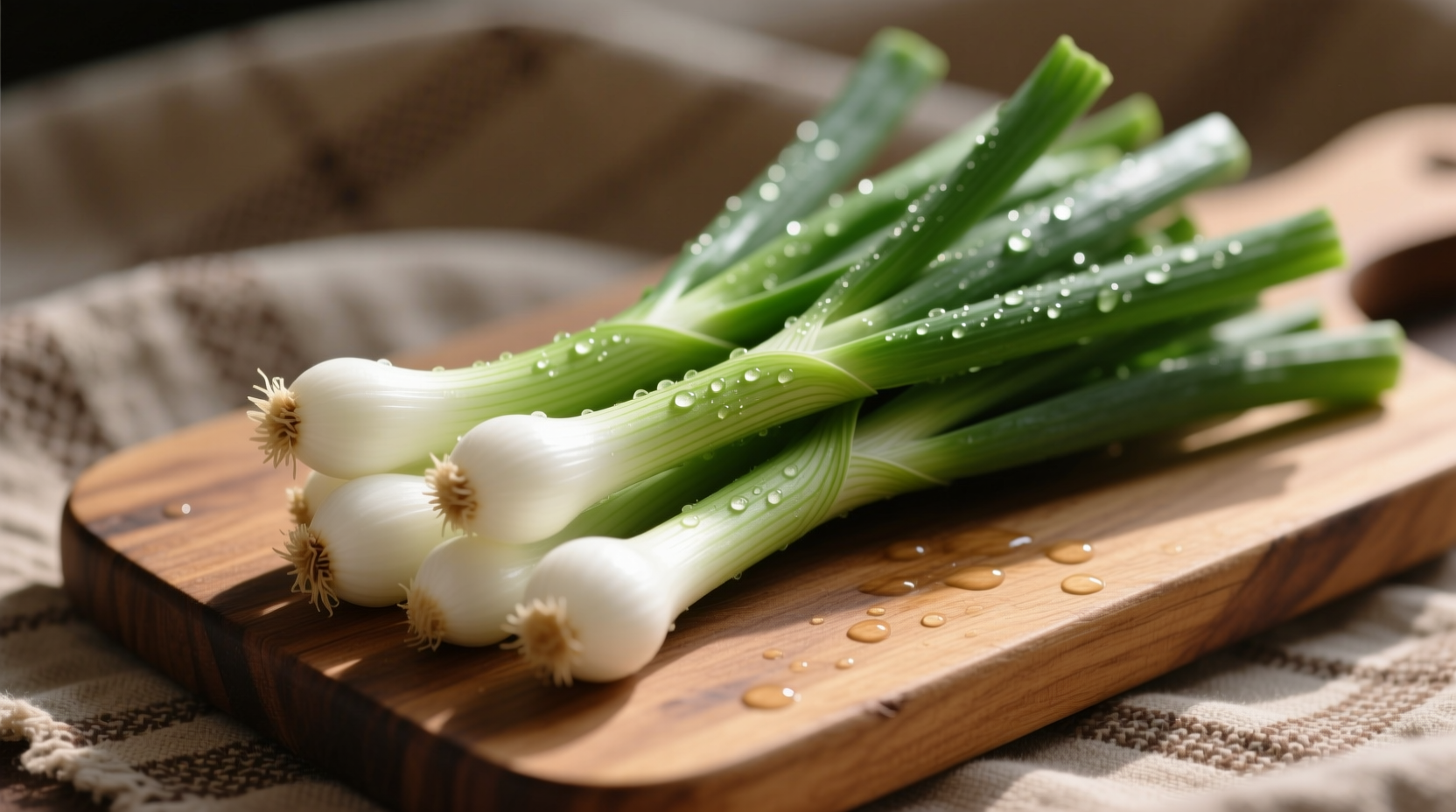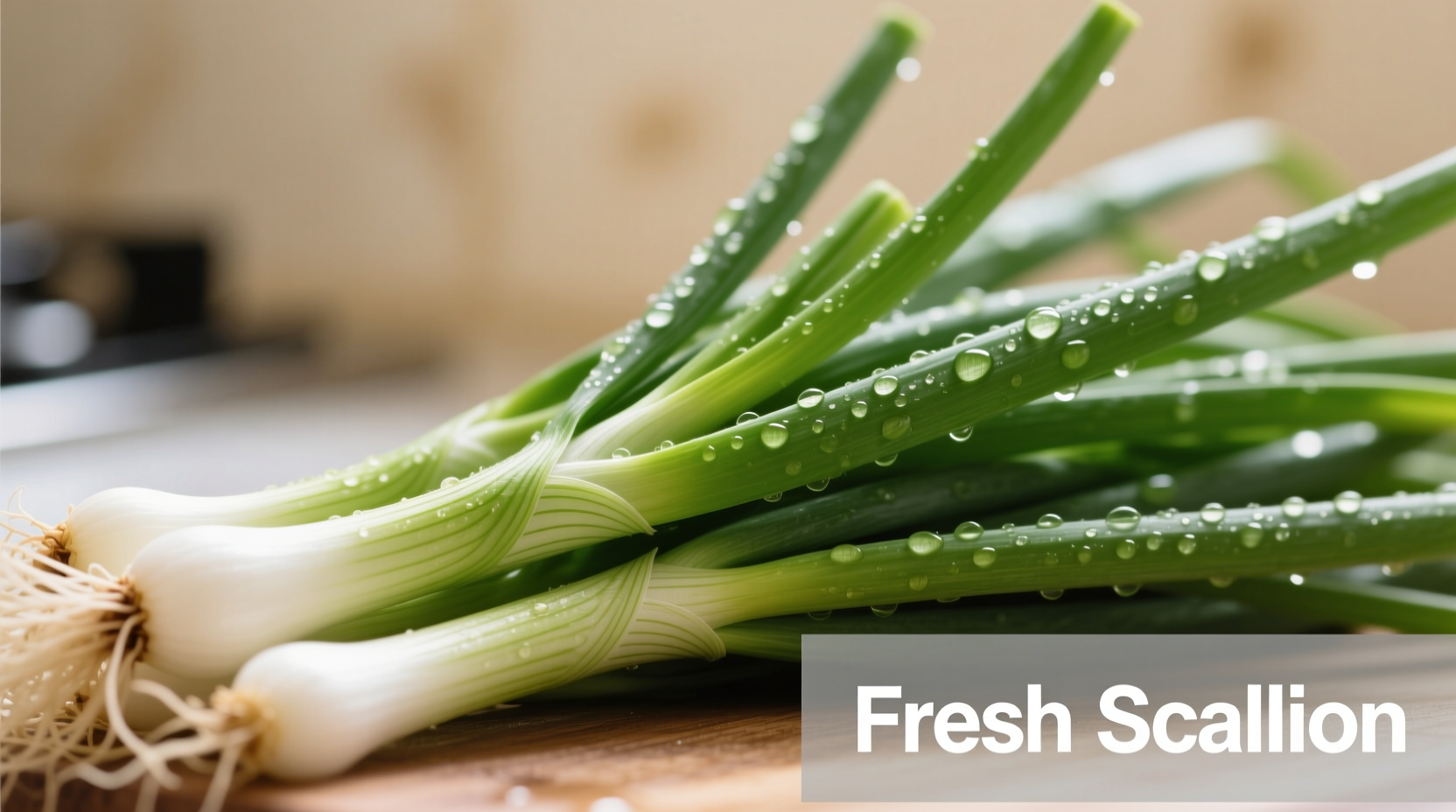Demystifying the Scallion-Green Onion Confusion
When you're standing in the grocery store holding what looks like a slender onion with green tops, you've probably wondered: is scallion green onion the same thing? The short answer is yes—they're identical plants with different regional names. Understanding this culinary terminology prevents recipe mistakes and helps you select the right ingredient for your dishes.
Why Two Names for One Vegetable?
The confusion between scallion and green onion stems from regional language preferences rather than botanical differences. In North America, both terms refer to Allium fistulosum, harvested young before the bulb fully develops. Chefs and home cooks use these terms interchangeably, though scallion appears more frequently in professional culinary contexts while green onion dominates supermarket labeling.
| Term | Primary Usage Region | Common Contexts |
|---|---|---|
| Scallion | Northeastern US, Canada, UK | Restaurant menus, chef recipes |
| Green Onion | Southern US, grocery stores | Supermarket produce sections |
| Spring Onion | UK, Australia | Refers to slightly more mature bulbs |
This USDA Agricultural Research Service documentation confirms that scallions and green onions share identical botanical classification with no varietal differences affecting culinary use.
Visual Identification: Spotting True Scallions/Green Onions
When selecting fresh scallions versus green onions, look for these characteristics:
- Slender white base (less than ½ inch diameter) without a fully formed bulb
- Vibrant green stalks that are crisp, not wilted
- No flowering (bulbous seed heads indicate over-maturity)

Avoid confusing them with spring onions, which have slightly larger bulbs (up to 1 inch diameter) and milder flavor, or chives, which are entirely hollow and grass-like with no white base.
Culinary Applications: Maximizing Flavor in Your Dishes
Understanding when to use scallions versus green onions matters less than knowing how to use their different parts:
White Base vs. Green Stalks
- White portion: More pungent, ideal for cooking (stir-fries, soups, sautés)
- Green portion: Milder flavor, perfect for garnishes (salads, tacos, finished dishes)
Regional Recipe Considerations
When following international recipes, note that:
- Asian recipes typically specify green onions for both raw and cooked applications
- French cuisine prefers échalote (shallot) which is different—don't substitute!
- Mexican recipes often call for cebollitas (grilled scallions)
Storage and Substitution Guidance
Keep your scallions and green onions fresh longer with these professional tips:
Proper Storage Method
- Trim root ends but keep white bases intact
- Stand upright in a glass with 1 inch of water
- Cover loosely with plastic bag
- Refrigerate and change water every 2 days
This technique maintains freshness for 7-10 days according to Kansas State University's food preservation research. For longer storage, freeze chopped scallions in ice cube trays with water.
Effective Substitutions
When you're out of scallions/green onions:
- Best substitute: Shallots (use ½ quantity due to stronger flavor)
- Budget option: Thinly sliced yellow onion with lemon juice to mellow sharpness
- Raw applications: Chives for garnish (but not cooking)
Common Misconceptions Clarified
Let's address frequent points of confusion in the scallion green onion debate:
"Spring Onions Are Just Mature Scallions"
False. While related, spring onions have developed small bulbs (up to 1 inch) with slightly sweeter flavor. True scallions/green onions never form bulbs.
"The Green Parts Are Too Mild to Cook"
Incorrect. The green portions add subtle onion flavor when added late in cooking. Try stirring them into finished soups or omelets for fresh flavor without overpowering heat.
Practical Cooking Tips from Professional Kitchens
Master the art of using scallions as green onions with these chef-recommended techniques:
Knife Skills for Perfect Results
- For garnishes: Cut on sharp diagonal for visual appeal
- For cooking: Slice white parts thinner than green parts (they cook faster)
- For stir-fries: Add white parts first, green parts in last 30 seconds
Flavor Pairing Suggestions
Enhance your dishes by combining scallions/green onions with:
- Asian cuisine: Ginger, garlic, sesame oil
- Mexican dishes: Cilantro, lime, jalapeños
- American classics: Bacon, cheddar, sour cream
Final Clarification: One Vegetable, Multiple Names
The persistent question is scallion green onion really boils down to regional language preferences, not botanical differences. Whether your recipe calls for scallions or green onions, you're working with the same versatile ingredient that adds mild onion flavor to countless dishes. Understanding this terminology prevents shopping confusion and ensures recipe success—whether you're making Chinese dumplings, Mexican guacamole, or American potato salad.











 浙公网安备
33010002000092号
浙公网安备
33010002000092号 浙B2-20120091-4
浙B2-20120091-4